
Fluxus was an international, interdisciplinary community of artists, composers, designers and poets during the 1960s and 1970s who engaged in experimental art performances which emphasized the artistic process over the finished product. Fluxus is known for experimental contributions to different artistic media and disciplines and for generating new art forms. These art forms include intermedia, a term coined by Fluxus artist Dick Higgins; conceptual art, first developed by Henry Flynt, an artist contentiously associated with Fluxus; and video art, first pioneered by Nam June Paik and Wolf Vostell. Dutch gallerist and art critic Harry Ruhé describes Fluxus as "the most radical and experimental art movement of the sixties".
Conceptual art, also referred to as conceptualism, is art in which the concept(s) or idea(s) involved in the work are prioritized equally to or more than traditional aesthetic, technical, and material concerns. Some works of conceptual art may be constructed by anyone simply by following a set of written instructions. This method was fundamental to American artist Sol LeWitt's definition of conceptual art, one of the first to appear in print:
In conceptual art the idea or concept is the most important aspect of the work. When an artist uses a conceptual form of art, it means that all of the planning and decisions are made beforehand and the execution is a perfunctory affair. The idea becomes a machine that makes the art.

Postmodern art is a body of art movements that sought to contradict some aspects of modernism or some aspects that emerged or developed in its aftermath. In general, movements such as intermedia, installation art, conceptual art and multimedia, particularly involving video are described as postmodern.
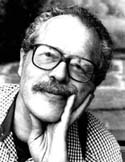
Dick Higgins was an American artist, composer, art theorist, poet, publisher, printmaker, and a co-founder of the Fluxus international artistic movement. Inspired by John Cage, Higgins was an early pioneer of electronic correspondence. Higgins coined the word intermedia to describe his artistic activities, defining it in a 1965 essay by the same name, published in the first number of the Something Else Newsletter. His most notable audio contributions include Danger Music scores and the Intermedia concept to describe the ineffable inter-disciplinary activities that became prevalent in the 1960s.
Intermedia is an art theory term coined in the mid-1960s by Fluxus artist Dick Higgins to describe the strategies of interdisciplinarity that occur within artworks existing between artistic genres. It was also used by John Brockman to refer to works in expanded cinema that were associated with Jonas Mekas' Film-Makers’ Cinematheque. Gene Youngblood also described intermedia, beginning in his Intermedia column for the Los Angeles Free Press beginning in 1967 as a part of a global network of multiple media that was expanding consciousness. Youngblood gathered and expanded upon intermedia ideas from this series of columns in his 1970 book Expanded Cinema, with an introduction by Buckminster Fuller. Over the years, intermedia has been used almost interchangeably with multi-media and more recently with the categories of digital media, technoetics, electronic media and post-conceptualism.

Artists' books are works of art that utilize the form of the book. They are often published in small editions, though they are sometimes produced as one-of-a-kind objects.
Ken Friedman is a design researcher. He was a member of Fluxus, an international laboratory for experimental art, architecture, design, and music. Friedman joined Fluxus in 1966 as the youngest member of the classic Fluxus group. He has worked closely with other Fluxus artists and composers such as George Maciunas, Dick Higgins, and Nam June Paik, as well as collaborating with John Cage and Joseph Beuys. He was the general manager of Dick Higgins's Something Else Press in the early 1970s. In the 1990s, Friedman's work as a management consultant and designer led him to an academic career, first as Professor of Leadership and Strategic Design at the Norwegian School of Management in Oslo, then as Dean of the Faculty of Design at Swinburne University of Technology in Melbourne. Friedman is currently University Distinguished Professor at Swinburne and Chair Professor of Design Innovation Studies at Tongji University.

Bengt af Klintberg is a Swedish folklorist, ethnologist, and artist who is known for his work on modern urban legends. His work reached a large audience with such books as Råttan i pizzan, published in 1986, and Den stulna njuren published in 1994.
Something Else Press was founded by Dick Higgins in 1963. It published many important Intermedia texts and artworks by such Fluxus artists as Higgins, Ray Johnson, Alison Knowles, Allan Kaprow, George Brecht, Daniel Spoerri, Robert Filliou, Al Hansen, John Cage, Emmett Williams and by such important modernist figures as Gertrude Stein, Henry Cowell, and Bern Porter.
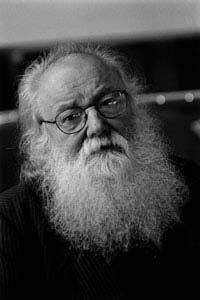
Pierre Restany, was an internationally known French art critic and cultural philosopher.
Geoffrey Hendricks was an American artist associated with Fluxus since the mid 1960s. He was professor of art at Douglass College, Rutgers University, where he taught from 1956 to 2003 and was associated with Fluxus at Rutgers University, Allan Kaprow, Roy Lichtenstein, and Lucas Samaras during the 1960s.
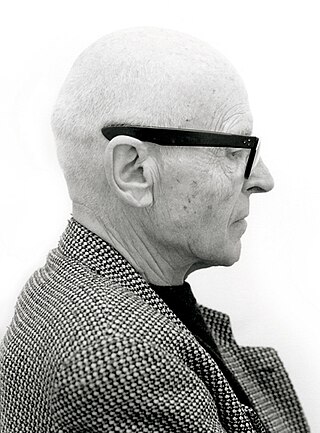
Jean Dupuy was a French-born American artist and pioneer of work combining art and technology. He worked in the fields of conceptual art, performance art, painting, installations, sculptures, and video art. In the 1970s he curated many performance art events involving different artists from Fluxus, the New York's avant-garde and neo-dada scene. Many of his works are part of important collections, such as Centre Pompidou in Paris and the MAMAC of Nice.

Mary Hildegard Ruth Bauermeister was a German artist who worked in sculpture, drawing, installation, performance, and music. Influenced by Fluxus artists and Nouveau Réalisme, her work addresses esoteric issues of how information is transferable through society. "I only followed an inner drive to express what was not yet there, in reality or thought", she said of her practice. "To make art was more a finding, searching process than a knowing." Beginning in the 1970s, her work concentrated on the themes surrounding New Age spirituality, specifically geomancy, the divine interpretation of lines on the ground.

Robin Page was a British painter. He was one of the early members of the Fluxus art movement.
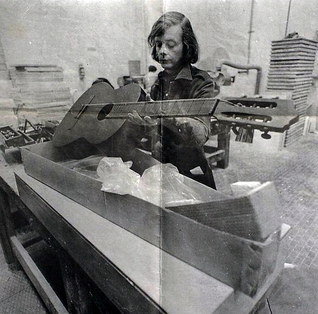
Joe Jones (1934–1993) was an American avant-garde musician associated with Fluxus, especially known for his creation of rhythmic music machines.
Eric Andersen is a Danish artist associated with the Fluxus art movement. He lives in Copenhagen, Denmark.
Carlos Capelán is a contemporary artist.
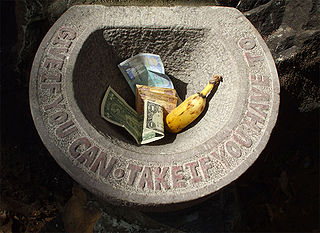
Jacek Tylicki is a Polish artist who settled in New York City in 1982. Tylicki works in the field of land art, installation art, and site-specific art. His conceptual projects often raise social and environmental issues.
Mieko Shiomi is a Japanese artist, composer, and performer who played a key role in the development of Fluxus. A co-founder of the seminal postwar Japanese experimental music collective Group Ongaku, she is known for her investigations of the nature and limits of sound, music, and auditory experiences. Her work has been widely circulated as Fluxus editions, featured in concert halls, museums, galleries, and non-traditional spaces, as well as being re-performed by other musicians and artists numerous times. She is best known for her work of the 1960s and early 1970s, especially Spatial Poem, Water Music, Endless Box, and the various instructions in Events & Games, all of which were produced as Fluxus editions. Now in her eighties, she continues to produce new work.
Endre Tot born in Sümeg, Hungary, 1937 is a Hungarian artist who lives and works in Berlin, Germany.










